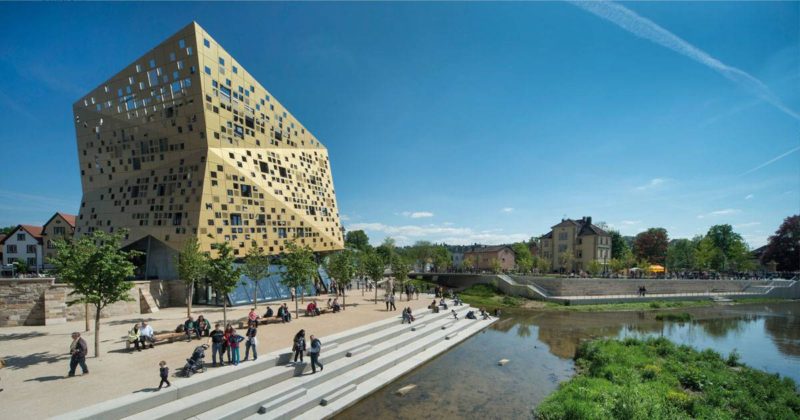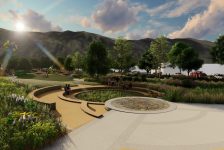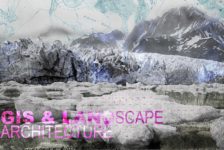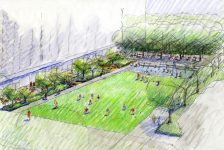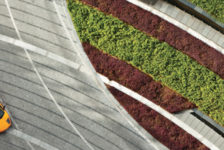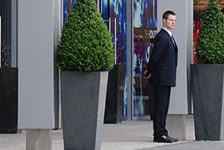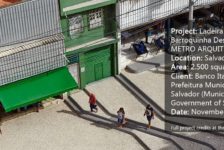Article by Tahío Avila – Urban development of Schwäbisch Gmünd, by A24 Landschaft Landschaftsarchitektur GmbH, in Schwäbisch Gmünd, Germany. Located in southwest Germany, Schwäbisch Gmünd is a medium-sized city developed at the shoreline of the confluence of two important rivers: the Josefsbach and the larger Rems River. This is one of the oldest Staufer cities, once part of the old Swabia (a historic region in southwestern Germany), which today houses about 60,000 residents. The wet surroundings had an effect on the development of the city, which expanded from its starting point in the delta out toward the inside of the territory. Things started changing with the distribution of the city after World War II, when many German cities were reconstructed in a “car-friendly” way.
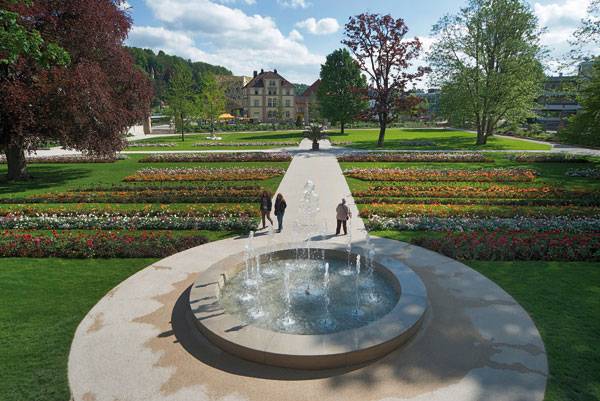
Urban development of Schwäbisch Gmünd. Photo credit: Hanns Joosten
Urban development of Schwäbisch Gmünd
Bringing Back the Green
The plan for the project was to reorient the inner city, including traffic diagrams. A few years ago, Schwäbisch Gmünd had no “green orientation” whatsoever. The city was intersected by a federal highway with a flow of about 35,000 cars per day. The riverbanks where inaccessible and the shoreline was deteriorated by the traffic axis. The city had no identity at all, so A24 Landschaft’s idea was to design a new urban axis and reorient historical urban structures, but especially to design a new green boulevard along the shoreline, with expansive public spaces for all kind of users. The project was designed to give the city a new image and identity, with green paths, sports areas, playgrounds, and public spaces in order to give citizens a quality of life worthy of a great shoreline.
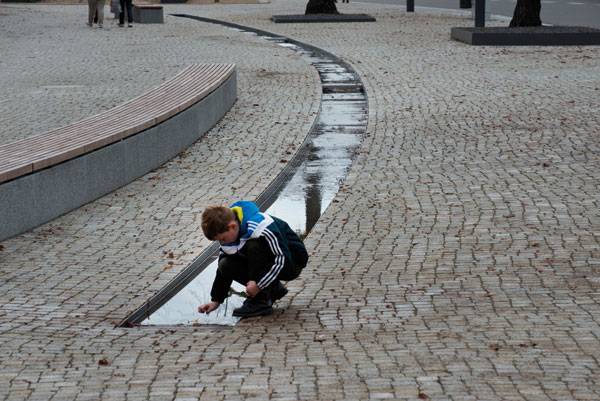
Urban development of Schwäbisch Gmünd. Photo credit: Hanns Joosten
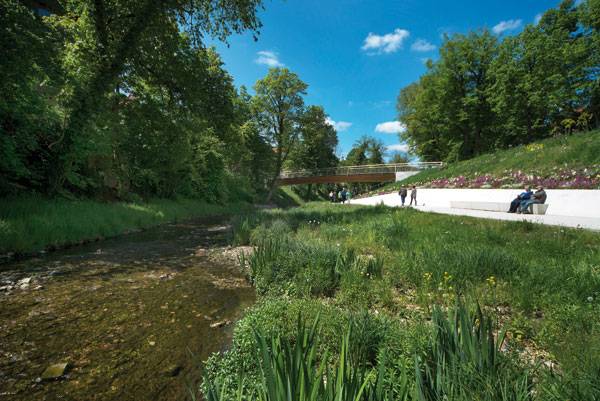
Urban development of Schwäbisch Gmünd. Photo credit: Hanns Joosten
Design with a Purpose
The main idea of this project was to increase a positive identification of the citizens with their city. The designers explained that Schwäbisch Gmünd had a functioning, “well-kept” historic city center; however, that wasn’t enough for inhabitants to feel a connection with an “organized routine.” The designers needed to create new geographical references and define spaces to find that balance between new and known, and the river was already a good starting point.
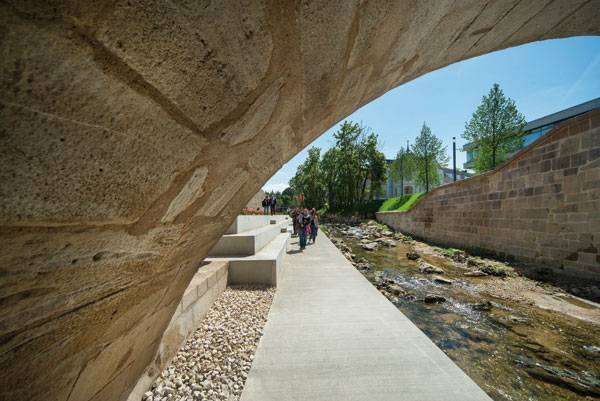
Urban development of Schwäbisch Gmünd. Photo credit: Hanns Joosten
The Plan
“The river junction is set to become a point of connection between the new and existing open areas of Schwäbisch Gmünd. Between the railway station and the old town, the old Baroque City Garden, Remspark, the Josefsbach and the Rems, as well as the passages to the old town, combine to form a spacious green zone. The public contracting authority has budgeted around 13 million euros for this comprehensive project” A24 Landschaft noted.
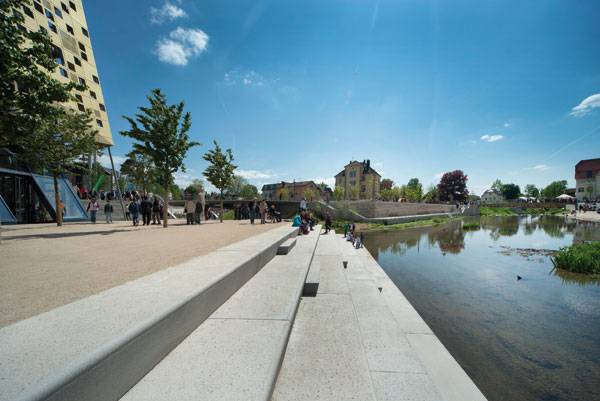
Urban development of Schwäbisch Gmünd. Photo credit: Hanns Joosten
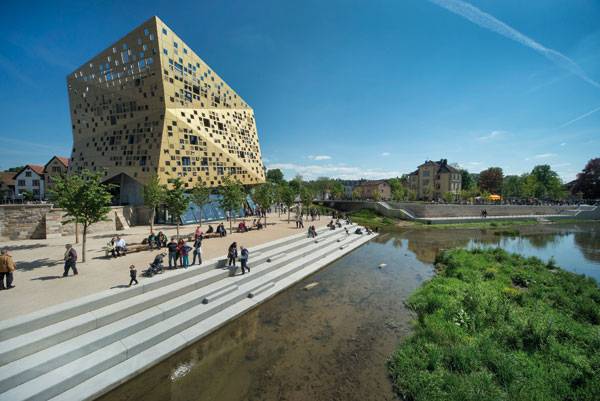
Urban development of Schwäbisch Gmünd. Photo credit: Hanns Joosten
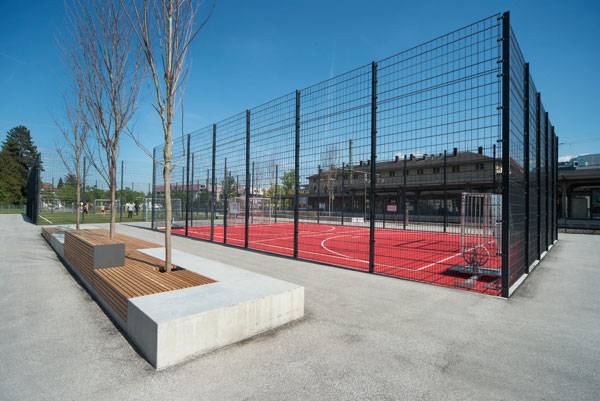
Urban development of Schwäbisch Gmünd. Photo credit: Hanns Joosten
Vegetation and Materials
The designers used a variety of construction materials. They go from concrete to cobblestone to sand in different paths. Every material was conscientiously studied for each particular area and situation, integrating the old and the new and creating a smooth transition. The same applies for vegetation: Diverse trees and shrubs species were placed along the boulevard to highlight nature and the construction around it, establishing the project’s character.
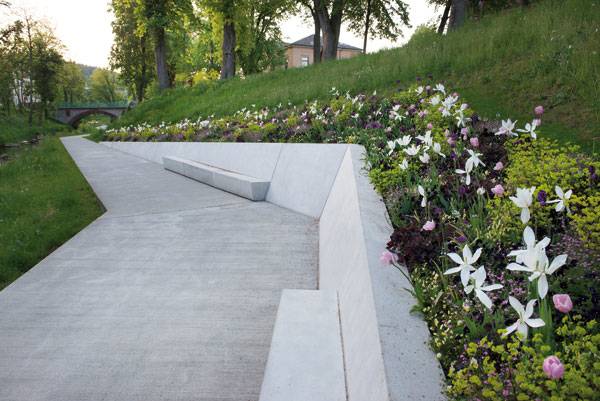
Urban development of Schwäbisch Gmünd. Photo credit: Hanns Joosten
Feedback From at Home and Around the World
A24 Landschaft confirms that there has been social and ecological improvement after the completion of the project. The boulevard, with its diversity of open spaces and activities, has been “warmly greeted” and continues to invigorate the city. The State Horticultural Show was successfully held in the zone, and they announced that the transformation of the city had “significantly improved the opinion of the city for around two-thirds of its residents,” not to metion its approximately two million visitors. The area continues to draw users from all over the region.
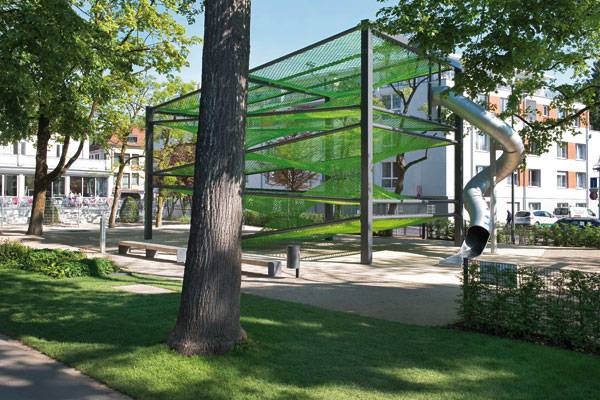
Urban development of Schwäbisch Gmünd. Photo credit: Hanns Joosten
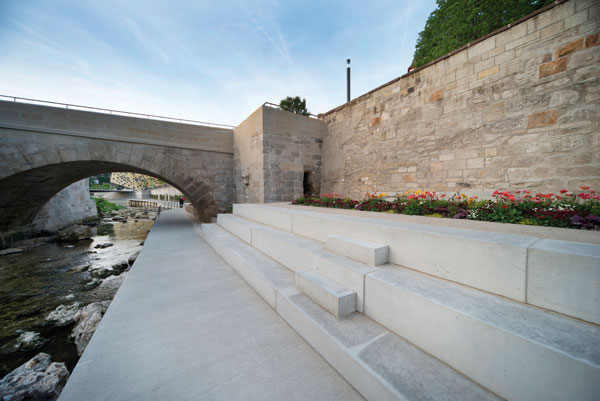
Urban development of Schwäbisch Gmünd. Photo credit: Hanns Joosten
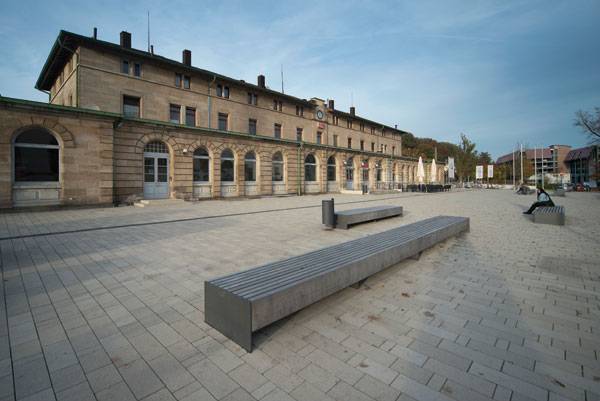
Urban development of Schwäbisch Gmünd. Photo credit: Hanns Joosten
Full Project Credits For Urban development of Schwäbisch Gmünd:
Landscape Architecture: A24 Landschaft Landschaftsarchitektur GmbH Project: Urban development of Schwäbisch Gmünd Location: Schwäbisch Gmünd, Germany Area: 14.6 hectares Design and Construction Period: 2008-2014 Construction Costs: 13 million Euros Client: Landesgartenschau Schwäbisch Gmünd 2014 GmbH Recommended Reading:
- Becoming an Urban Planner: A Guide to Careers in Planning and Urban Design by Michael Bayer
- Sustainable Urbanism: Urban Design With Nature by Douglas Fa



